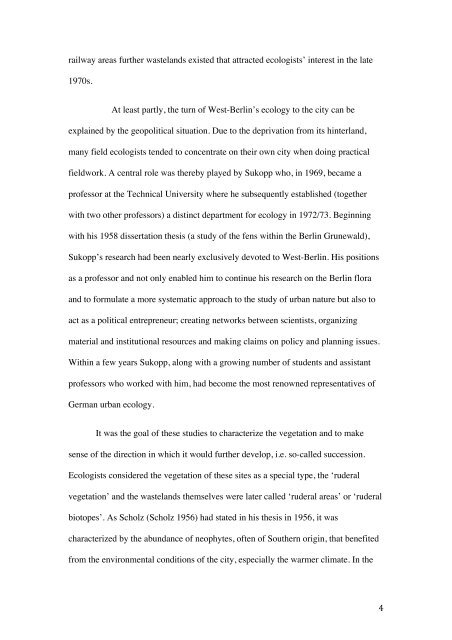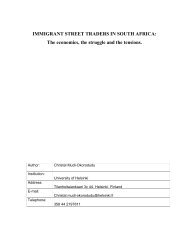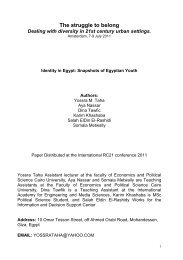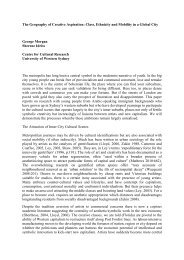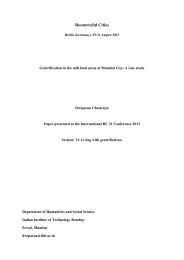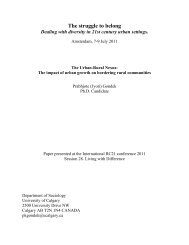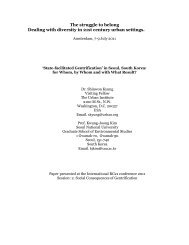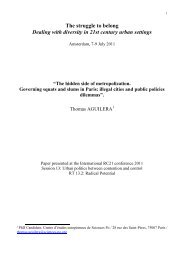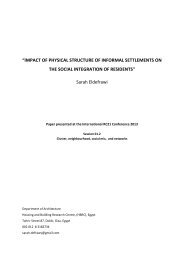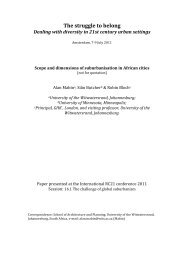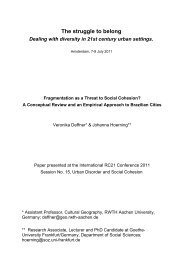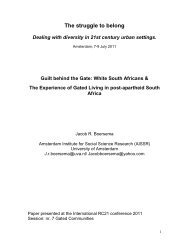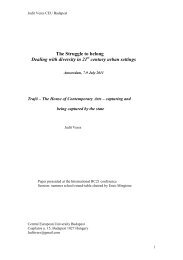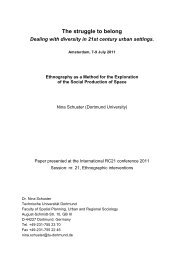The Invention of the Ruderal Area. Urban Ecology and the Struggle ...
The Invention of the Ruderal Area. Urban Ecology and the Struggle ...
The Invention of the Ruderal Area. Urban Ecology and the Struggle ...
Create successful ePaper yourself
Turn your PDF publications into a flip-book with our unique Google optimized e-Paper software.
ailway areas fur<strong>the</strong>r wastel<strong>and</strong>s existed that attracted ecologists’ interest in <strong>the</strong> late<br />
1970s.<br />
At least partly, <strong>the</strong> turn <strong>of</strong> West-Berlin’s ecology to <strong>the</strong> city can be<br />
explained by <strong>the</strong> geopolitical situation. Due to <strong>the</strong> deprivation from its hinterl<strong>and</strong>,<br />
many field ecologists tended to concentrate on <strong>the</strong>ir own city when doing practical<br />
fieldwork. A central role was <strong>the</strong>reby played by Sukopp who, in 1969, became a<br />
pr<strong>of</strong>essor at <strong>the</strong> Technical University where he subsequently established (toge<strong>the</strong>r<br />
with two o<strong>the</strong>r pr<strong>of</strong>essors) a distinct department for ecology in 1972/73. Beginning<br />
with his 1958 dissertation <strong>the</strong>sis (a study <strong>of</strong> <strong>the</strong> fens within <strong>the</strong> Berlin Grunewald),<br />
Sukopp’s research had been nearly exclusively devoted to West-Berlin. His positions<br />
as a pr<strong>of</strong>essor <strong>and</strong> not only enabled him to continue his research on <strong>the</strong> Berlin flora<br />
<strong>and</strong> to formulate a more systematic approach to <strong>the</strong> study <strong>of</strong> urban nature but also to<br />
act as a political entrepreneur; creating networks between scientists, organizing<br />
material <strong>and</strong> institutional resources <strong>and</strong> making claims on policy <strong>and</strong> planning issues.<br />
Within a few years Sukopp, along with a growing number <strong>of</strong> students <strong>and</strong> assistant<br />
pr<strong>of</strong>essors who worked with him, had become <strong>the</strong> most renowned representatives <strong>of</strong><br />
German urban ecology.<br />
It was <strong>the</strong> goal <strong>of</strong> <strong>the</strong>se studies to characterize <strong>the</strong> vegetation <strong>and</strong> to make<br />
sense <strong>of</strong> <strong>the</strong> direction in which it would fur<strong>the</strong>r develop, i.e. so-called succession.<br />
Ecologists considered <strong>the</strong> vegetation <strong>of</strong> <strong>the</strong>se sites as a special type, <strong>the</strong> ‘ruderal<br />
vegetation’ <strong>and</strong> <strong>the</strong> wastel<strong>and</strong>s <strong>the</strong>mselves were later called ‘ruderal areas’ or ‘ruderal<br />
biotopes’. As Scholz (Scholz 1956) had stated in his <strong>the</strong>sis in 1956, it was<br />
characterized by <strong>the</strong> abundance <strong>of</strong> neophytes, <strong>of</strong>ten <strong>of</strong> Sou<strong>the</strong>rn origin, that benefited<br />
from <strong>the</strong> environmental conditions <strong>of</strong> <strong>the</strong> city, especially <strong>the</strong> warmer climate. In <strong>the</strong><br />
<br />
4


